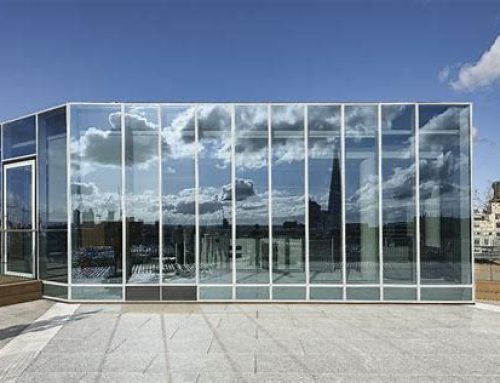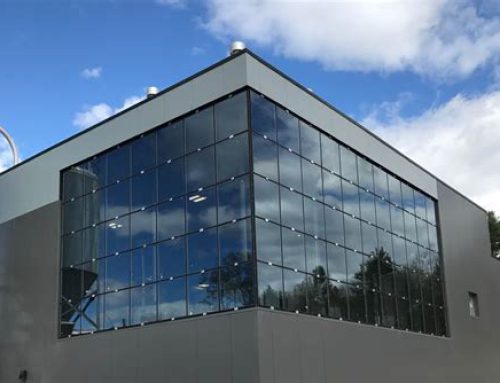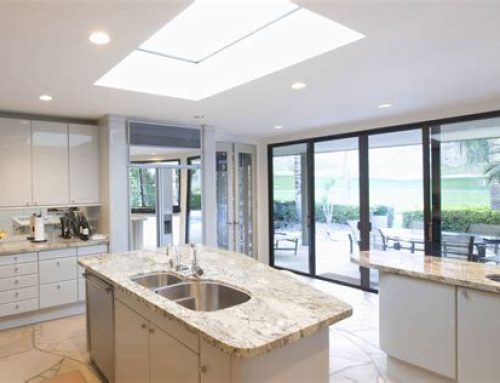Standard Aluminum Profiles

Introduction
Aluminum, with its exceptional properties of lightness, durability, and corrosion resistance, has established itself as a favored material in various industries. Its versatility extends even further with the use of standard aluminum profiles. These profiles are pre-fabricated, standardized aluminum shapes that find application in a wide range of industries and projects. In this article, we will delve into the world of standard aluminum profiles, exploring their characteristics, benefits, and the diverse fields where they play a pivotal role.
Characteristics of Standard Aluminum Profiles
- Diversity in Shapes: Standard aluminum profiles come in an assortment of shapes and sizes, making them adaptable to countless applications. From basic shapes like angles, channels, and T-sections to more complex profiles like I-beams and custom-designed extrusions, there is a profile to suit almost any requirement.
- Lightweight Yet Strong: Aluminum is renowned for its lightweight yet robust properties. This is a crucial feature for many applications where structural integrity is essential, such as in construction, automotive, and aerospace.
- Corrosion Resistance: Aluminum naturally forms a protective oxide layer, making it highly resistant to corrosion. This property is particularly valuable in outdoor and marine applications, where exposure to moisture and salt is common.
- Thermal Conductivity: Aluminum is an excellent conductor of heat. Standard aluminum profiles are often used in heatsink designs, helping to dissipate heat efficiently in electronic devices and systems.
Benefits of Standard Aluminum Profiles
- Cost-Efficiency: Standardized profiles are mass-produced, which means they are readily available and usually more affordable than custom-made alternatives. This makes them an economical choice for a wide range of applications.
- Ease of Fabrication: Aluminum is relatively easy to work with, allowing for straightforward machining, welding, and assembly. This ease of fabrication contributes to cost savings and shorter lead times.
- Sustainability: Aluminum is a highly recyclable material. By using standard aluminum profiles, industries can promote sustainability by reusing and recycling aluminum products, reducing waste and energy consumption.
- Design Flexibility: Despite being standardized, aluminum profiles offer substantial design flexibility. They can be easily customized by cutting, bending, or adding various accessories to meet specific project requirements.
Applications of Standard Aluminum Profiles
- Construction: In the construction industry, aluminum profiles find use in windows, doors, curtain walls, structural framing, and interior decor elements. Their lightweight yet sturdy nature makes them ideal for creating aesthetically pleasing and functional architectural features.
- Transportation: The automotive and aerospace sectors rely on aluminum profiles for their excellent strength-to-weight ratio. They are used in vehicle frames, aircraft components, and various transport-related applications.
- Electronics: Aluminum profiles serve as heatsinks in electronic devices to dissipate heat generated by components like processors and LEDs, preventing overheating and ensuring the longevity of electronic products.
- Industrial Machinery: Manufacturers use aluminum profiles in the construction of conveyor systems, machine frames, and workstations due to their durability, ease of assembly, and resistance to corrosion.
- Renewable Energy: Solar panel mounting systems often incorporate aluminum profiles due to their lightweight and corrosion-resistant properties, allowing for easy installation and long-term durability in outdoor environments.
The Future of Standard Aluminum Profiles
As we look toward the future, standard aluminum profiles are likely to play an even more significant role in various industries. Here are a few trends and developments that could shape the future of aluminum profiles:
- Advanced Alloys: Ongoing research and development in aluminum alloys are expected to result in new materials with enhanced properties, such as improved strength, corrosion resistance, and thermal conductivity. These innovations will expand the range of applications for standard aluminum profiles.
- Sustainable Manufacturing: Sustainability is a growing concern across industries. Manufacturers are increasingly adopting environmentally friendly practices in aluminum production, including using renewable energy sources, recycling aluminum, and minimizing waste. This aligns with the demand for sustainable materials and processes.
- 3D Printing: The advent of 3D printing technology has opened up new possibilities for customizing aluminum profiles. While standard profiles will still have their place, 3D printing allows for the creation of complex and unique aluminum components tailored to specific applications.
- Lightweighting: With a continued focus on reducing weight and improving fuel efficiency, aluminum profiles will remain a key component in the automotive and aerospace industries. As electric vehicles become more prevalent, lightweight aluminum structures will be crucial for maximizing range and energy efficiency.
- Urbanization and Infrastructure: As cities continue to grow and modernize, the construction industry will rely on aluminum profiles for innovative architectural designs and sustainable building solutions. This includes the use of aluminum in smart buildings and infrastructure projects.
- Renewable Energy: The transition to renewable energy sources like wind and solar power will drive the demand for aluminum profiles in the manufacturing of solar panels, wind turbine components, and energy storage systems.
Challenges and Considerations
While standard aluminum profiles offer numerous benefits, it’s important to acknowledge some challenges and considerations associated with their use:
- Design Complexity: While standard profiles are versatile, there are instances where highly complex or unique designs may require custom aluminum extrusions. In such cases, the initial setup costs for custom profiles may be justified by the precise design requirements.
- Supply Chain Issues: Like many materials, aluminum can be subject to supply chain disruptions due to factors like market demand, geopolitical events, or trade policies. Companies may need to plan for these potential disruptions in their procurement strategies.
- Environmental Impact: While aluminum is inherently recyclable, the production process can still have environmental consequences. It’s essential for manufacturers to invest in sustainable practices and consider the overall life cycle impact of aluminum products.
- Aluminum Pricing: Aluminum prices can fluctuate due to various factors, including global market conditions and trade tariffs. These price fluctuations can affect the cost-effectiveness of aluminum profiles for certain projects.
- Corrosion Resistance: While aluminum is naturally corrosion-resistant, it can still corrode under certain conditions. Proper surface treatments or coatings may be necessary in environments with high levels of acidity, alkalinity, or salt exposure.
- Material Compatibility: When selecting aluminum profiles for specific applications, it’s essential to consider material compatibility. In some cases, aluminum may not be suitable for use with certain chemicals or substances, necessitating alternative materials.
Conclusion
Standard aluminum profiles have firmly established themselves as essential components in numerous industries, offering a blend of versatility, strength, and sustainability. Their applications span from the construction of modern skyscrapers to the development of advanced electronics and renewable energy systems. As industries continue to innovate and demand efficient and eco-friendly solutions, aluminum profiles are poised to evolve and adapt to meet these evolving needs.
To maximize the benefits of standard aluminum profiles while addressing challenges, companies should engage in sustainable practices, stay informed about market dynamics, and carefully consider the specific requirements of their projects. With the ongoing advancements in aluminum alloys, 3D printing, and sustainable manufacturing, the future of standard aluminum profiles looks promising, promising continued growth and innovation across industries.





Leave A Comment